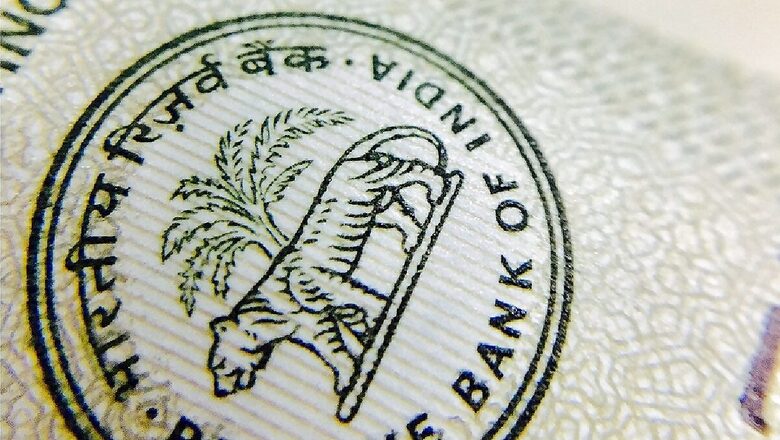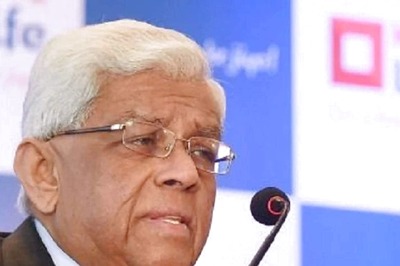
views
Experts suggest that the Reserve Bank of India (RBI) is unlikely to reduce the benchmark interest rate in its upcoming monetary policy review meeting. This meeting is set to take place shortly after the Lok Sabha election results are announced.
The decision comes amidst inflation challenges.
The Monetary Policy Committee (MPC) may also choose not to cut rates, considering the current economic growth momentum, despite the prevailing repo rate of 6.5 per cent since February 2023.
The meeting, chaired by Reserve Bank Governor Shaktikanta Das, is scheduled from June 5 to 7. The decision will be announced on June 7 (Friday), following the Lok Sabha election results on June 4.
The central bank last hiked the repo rate to 6.5 per cent in February 2023 and since then it has held the rate at the same level in its previous six bi-monthly policies.
If the interest rate remains untouched again on June 7, it would be the eighth time for the RBI to maintain the status quo on the benchmark repo rate.
On expectations from the June policy, Madan Sabnavis, chief economist, Bank of Baroda, said economic conditions have largely remained unchanged since the last policy. High-frequency indicators like PMI and GST collections do show that growth is on course.
He further said concerns about inflation remain even though the last couple of numbers have come at less than 5 per cent. The ongoing heat wave has affected prices of vegetables in particular and while the IMD has predicted a normal monsoon, it would be prudent to wait and monitor how it progresses.
“Under these conditions, a status quo on policy rate and stance may be expected. It would be interesting to see, however, if RBI changes forecasts of GDP and inflation for FY25,” Sabnavis opined.
Sanjay Nayar, president of the industry body Assocham, told news agency PTI that the central bank is expected to keep the repo rate unchanged in the ensuing MPC meeting as retail inflation remains above the target of 4 per cent.
“Though inflation has started receding, the macros would become clearer only after the monsoon season plays out in September. To get a sustainable balance between cyclical consumption-driven growth and inflation, investment growth to propel the supply side…,” he added.
The government has mandated the Reserve Bank to ensure the consumer price index (CPI) based inflation remains at 4 per cent with a margin of 2 per cent on either side.
The retail inflation based on the Consumer Price Index (CPI) was 4.83 per cent in April this year.
Aditi Nayar, chief economist, ICRA, said the recent inflation data and the outlook for prices of food and commodities had suggested a status quo on the rates and stance in the upcoming June 2024 monetary policy review.
“This has been further cemented by the higher-than-forecast expansion in the Indian economy in Q4 FY2024, which led to the full year GDP growth printing above 8 per cent. As a result, the likelihood of a stance change in August 2024 followed by a rate cut in October 2024 has eased, unless an abundantly well distributed monsoon quells food prices in a sustainable fashion,” she added.
The MPC is entrusted with the responsibility of deciding the policy repo rate to achieve the inflation target, keeping in mind the objective of growth.
Ranen Banerjee, Partner and Leader Economic Advisory, PwC India, opined that given the uncertainty and risks on the inflation front, commodity prices and oil prices trending higher, the MPC will be constrained to have a status quo on the policy rates.
“There is no urgency on rate action too as the growth is sustaining and the US economic data also suggests that the US Fed will not cut rates before October 2024. The yields have softened without any rate action given the expected lower borrowings by the government from the high dividends from RBI,” he said.
There could however be some action by way of reduction in the CRR given the liquidity challenges, Banerjee added.
Manish Jaiswal, Group COO, Eldeco, also expects the RBI to keep the repo rate steady at the forthcoming monetary policy meeting.
“This policy aims to stabilise the real estate market, make homes more affordable, and sustain growth. Stable home loan rates improve consumer confidence and enable more informed investment decisions. This favourable environment enables us to launch new projects and encourages buyers to invest confidently, thereby driving real estate sector growth and contributing to India’s economic progress,” he said.
Ramani Sastri, chairman & MD, Sterling Developers highlights that the demand for residential real estate has been registering significant growth in recent times and continues to exhibit momentum as we proceed ahead in 2024.
“It would be better to maintain the status quo in the upcoming RBI Monetary Policy as this would give a further fillip to the demand for residential property and enhance market confidence. Moreover, stable home loan rates improve consumer confidence and enable more informed investment decisions, since there is a noticeable shift in the intent and aspirations of Indian homebuyers,” Sastri said.
Sastri added a future repo rate cut would serve as a big boost to homebuyer sentiment and enable better affordability, which is an extremely sensitive factor in the housing market.
Atul Monga, co-founder and CEO, BASIC Home Loan also feels that MPC is likely to keep the repo rate unchanged as rise in food prices continues to pose an inflation threat.
“While an immediate rate cut may be on the radar, the potential reduction in the rates are likely to happen later in the year – maybe sometime around October this year. Forecasts regarding inflation might be revised down slightly, while growth predictions regarding GDP are expected to remain stable,” Monga said.
Swati Saxena, founder & CEO, 4 Thoughts Finance says RBI is expected to maintain current policy rates to stimulate investment and consumption while carefully balancing the imperatives of fostering economic growth and mitigating inflationary pressures.
“We anticipate that investor sentiment will remain bullish, bolstered by the market’s ongoing resilience and consistent performance. This optimistic outlook is underpinned by several key factors, including robust economic indicators, favourable corporate earnings reports, and sustained confidence in future growth prospects. Additionally, the influx of institutional investments and the continued availability of liquidity are likely to support this positive market sentiment, ensuring that the bullish trend persists in the foreseeable future,” Saxena said.
The MPC consists of three external members and three officials of the RBI.
External members of the rate-setting panel are Shashanka Bhide, Ashima Goyal, and Jayanth R Varma.
In an off-cycle meeting in May 2022, the MPC raised the policy rate by 40 basis points and it was followed by rate hikes of varying sizes, in each of the five subsequent meetings till February 2023.
The repo rate was raised by 250 basis points cumulatively between May 2022 and February 2023.




















Comments
0 comment